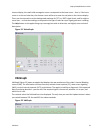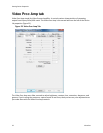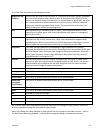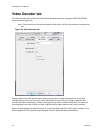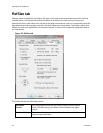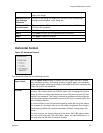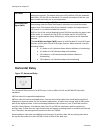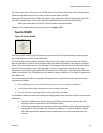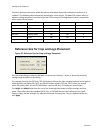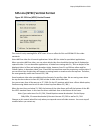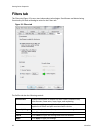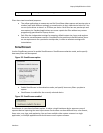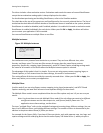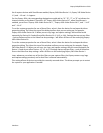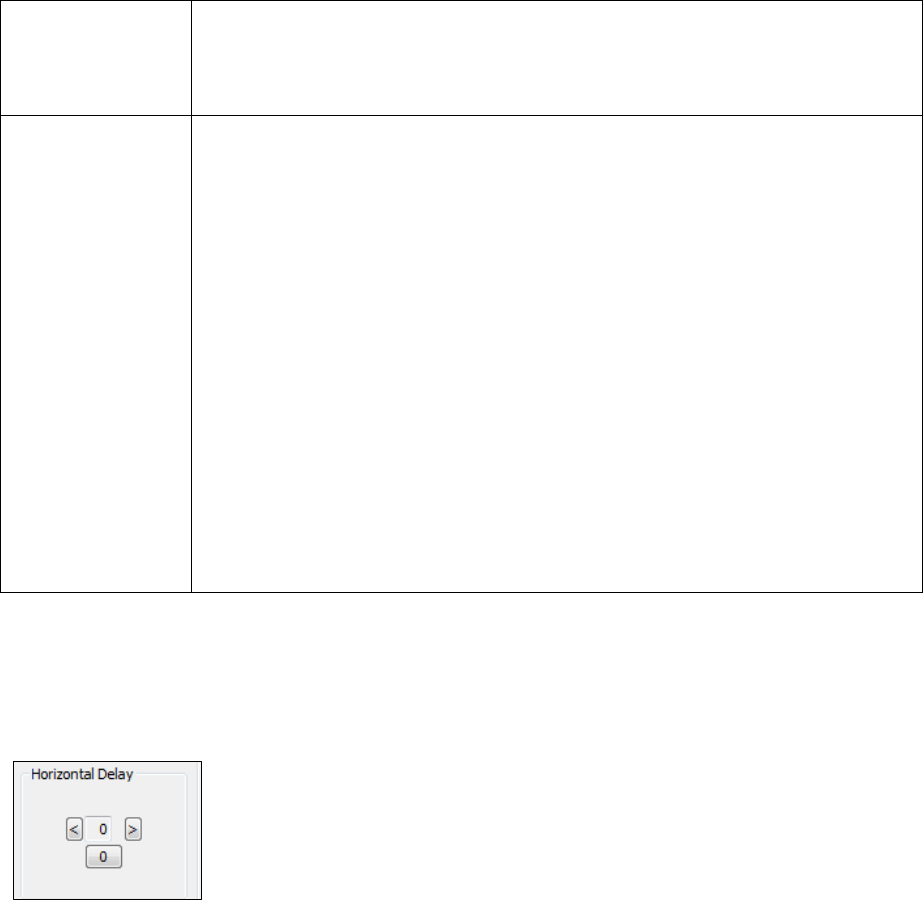
Setting Driver Properties
28 ViewCast
16:9 Wide
Select 16:9 Wide for 1.85:1 anamorphic video such as DVD content and any
widescreen content. The output video size is 852 x 480 for 525-line standards,
and 1024 x 576 for 625-line standards. To actually see output of this size, you
have to also select this size in your application.
Use WideScreen
Signal (WSS)
The Use WideScreen Signal (WSS) control enables automatic sidebars and
letterboxing when the input video aspect ratio does not match the output
aspect ratio. If the aspect ratio of your content is subject to change between
16:9 and 4:3, it is useful to enable this control.
WSS is a line of the vertical blanking interval (VBI) that encodes the aspect ratio
of the video. It is normally line 20 of 525-line video and line 22 of 625-line
video. It is generated by newer DVD players, and is present in PAL broadcast
content.
The Use WideScreen Signal (WSS) control is useful for both 4:3 and 16:9 input
formats, and for both 4:3 and 16:9 output formats. When selected, it has the
following effects:
4:3 video on a 4:3 window shows without sidebars or letterboxing
4:3 video on a 16:9 window shows with sidebars
16:9 video on a 16:9 window shows without sidebars or
letterboxing
16:9 video on a 4:3 window shows with letterboxing
Horizontal Delay
Figure 27. Horizontal Delay
The Horizontal Delay control is for NTSC users. It has no effect for PAL and SECAM 625-line video
standards.
485-line video is for specialized applications.
480-line video is for all normal applications. You can select which video lines should be the top line of
displayed or captured video. For non-broadcast applications, all video lines starting with 21/284 can be
part of the displayed video. In films and analog broadcast video, however, lines 21 and 284 are often
used for Closed Caption. In broadcast video, lines 22 and 285 are sometimes used for proprietary
ancillary data. If these lines are used for data they will appear as moving bands or streaks across the top
lines. Therefore, the most generally useful start lines are 23/286.
Some broadcast video also uses additional top line pairs for ancillary data. We are seeing cases where
the top line has to be set to lines 26/289 in order to hide all the data lines.




